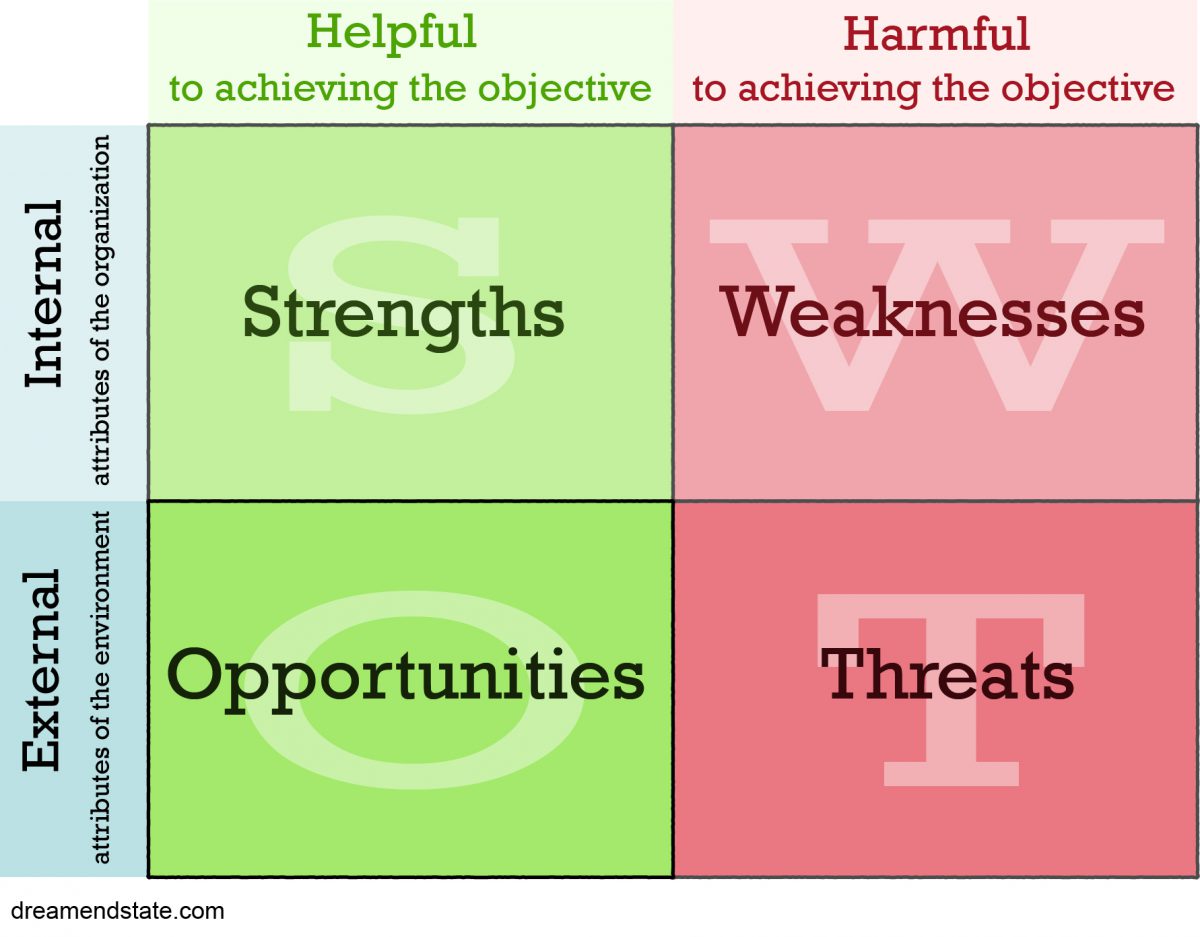Possibly the most popular strategy tool ever (strategists and business consultants love a 2×2) the SWOT box helps you identify strengths, weaknesses, opportunities, and threats.
A SWOT analysis can help you carve out a sustainable niche in you market, or on a personal level, help develop your career that best uses your talent and opportunities.
The model can be used in two ways: as a kick-off to a deeper strategic dive or as a more sophisticated strategic tool. It’s particularly powerful when combined with other strategy models such as Porter’s 5 forces, PESTLE and scenario analysis.
How to use the model
From a business perspective, these questions should help you flesh out a SWOT:
Strengths
- what advantages does your business have?
- what do you do better than anyone else?
- how does the market see your strengths?
- what is your USP?
- what low-cost or unique resources can you draw on that others can’t?
Weaknesses
- what can you improve?
- what should you avoid?
- what does the market see as your weaknesses?
Opportunities
- what good opportunities are there?
- what trends are you aware of?
- what new technology could you combine from adjacent industries?
Threats
- what obstacles do you face?
- what are your rivals doing?
- is changing technology threatening your position?
- are standard for your products and services changing?
When used as an in-depth tool, quantifiable statements should be used rather than vague statements such as “better customer service”. And prune and prioritise your points in each category.
Watch out for
One downside of the conventional SWOT analysis is that it doesn’t take into account the dynamic forces at work in modern business. Instead, Adam Brandenburger says we should tweak SWOT to look at our strengths (and weaknesses of our competitors) as threats and our weaknesses (and strengths of competitors) as opportunities. This echoes Clayton Christensen’s work on disruptive innovation and his explanation of how company competencies can become obstacles.
A surprising number of innovations fail not because of some fatal technological flaw or because the market isn’t ready. They fail because responsibility to build these businesses is given to managers or organisations whose capabilities aren’t up to the task. Corporate executives make this mistake because most often the very skills that propel an organisation to succeed in sustaining circumstances systematically bungle the best ideas for disruptive growth. An organisation’s capabilities become its disabilities when disruption is afoot.
Clayton Christensen & Michael Raynor, (2013) The Innovators Solution. p.177
Resources
Brandenburger, A. (August 22, 2019). Are Your Company’s Strengths Really Weaknesses? Harvard Business Review
Christensen. C. & Raynor, M. (2013). Innovator’s Solution, Revised and Expanded: Creating and Sustaining Successful Growth. Harvard Business Review Press
Helms, M. H. & Nixon, J. (2010). Exploring SWOT analysis – where are we now? A review of academic research from the last decade. Journal of Strategy and Management
Leonard-Barton, D. (1992). Core Capabilities and Core Rigidities: A paradox In Managing New Product Development. Strategic Management Journal 13

